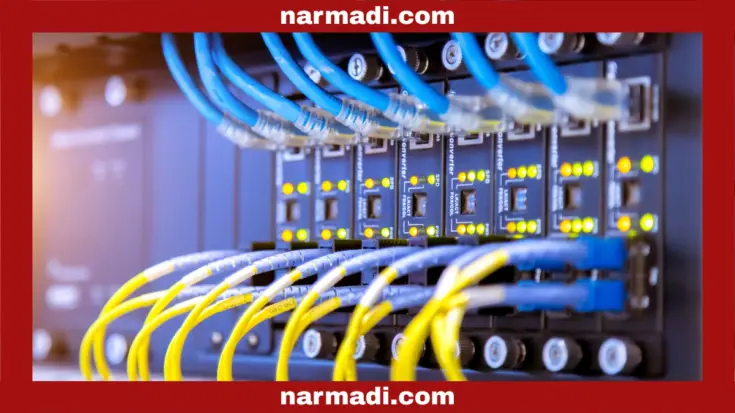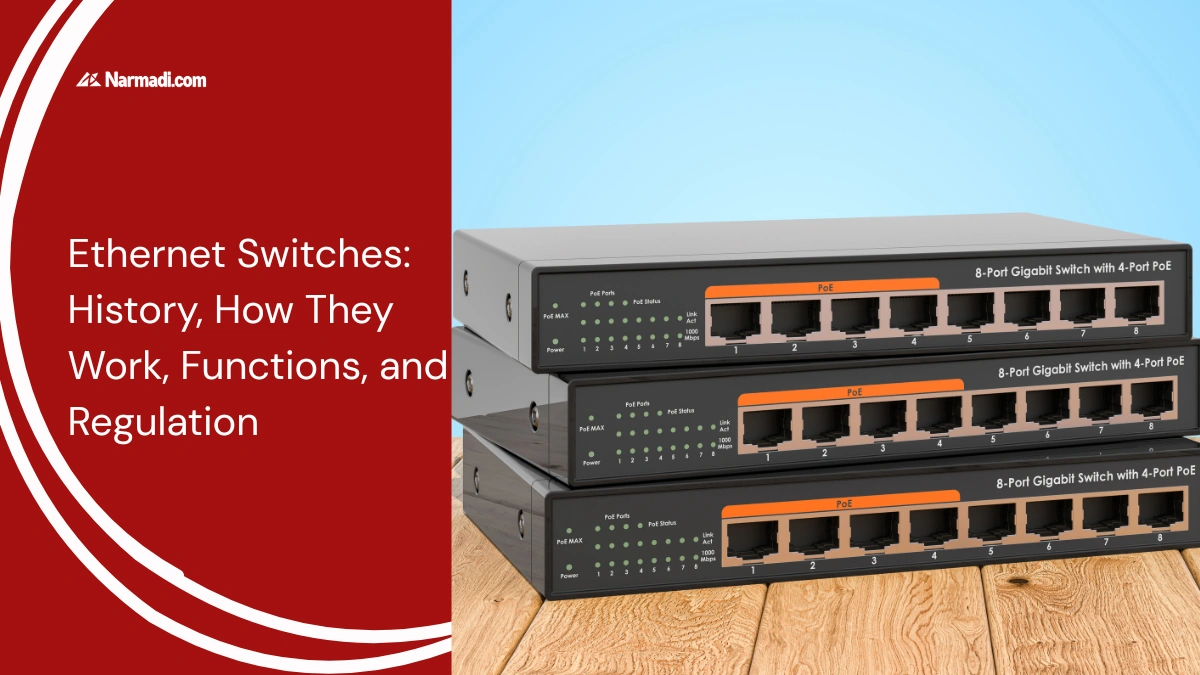Ethernet switches are one of the main devices that facilitate data communication in a Local Area Network (LAN). This device connects various other devices, such as computers, servers, printers, and other network devices.
The use of Ethernet switches enables efficient communication without interfering with other devices that are not involved in the data transmission process.
In this article, we will discuss Ethernet switches, including a definition, their history, operation, primary functions, and an overview of usage regulations.
Also Read
Table of Contents
What are Ethernet Switches?

An Ethernet switch is a network device that connects various devices within a Local Area Network (LAN). The device is capable of forwarding data packets based on the MAC (Media Access Control) address of each device.
Compared to a hub, a switch works more efficiently because it only sends data to the destination device. It does not send data to all devices connected to the network.
A Brief History
Ethernet technology was first developed by Robert Metcalfe at Xerox PARC in 1973. Initially, Ethernet was used for local area networks with a data transfer speed of 10 Mbps.
However, with advances in technology, Ethernet is now capable of speeds up to 100 Gbps and has become the standard in corporate networks, data centers, and various industrial applications. Here is its history:
- 1973: The basic concept of Ethernet was created by Robert Metcalfe and David Boggs at Xerox PARC. It was initially used to connect computers in a local area network (LAN) using coaxial cable.
- Early 1980s: Ethernet was standardized as IEEE 802.3.
- 1989-1990: The first Ethernet switch was introduced by Kalpana, enabling more efficient data transmission compared to outdated hubs.
- Mid-1990s: Switches with higher speeds were introduced, such as 10/100 Mbps switches and later Gigabit Ethernet (1000 Mbps).
- Late 1990s and 2000s: Layer 3 switches were developed to add routing functions. With this development, switches could become central points for directing data between various subnets.
- Today: Modern switches are equipped with advanced features such as Power over Ethernet (PoE). This feature allows switches to not only transfer data but also provide power to connected devices. In fact, switches can now be integrated with software for data analysis using artificial intelligence (AI) and machine learning.
How do They Work?

Ethernet switches operate using MAC address tables to direct data to the correct device. Each time a device connects, the switch records its MAC address and determines the most efficient path for transmitting data. The switching process is carried out using the following methods:
- Store and Forward: Data is analyzed before being sent to ensure there are no errors in transmission.
- Cut-through Switching: Data is sent directly without in-depth inspection, resulting in a faster transfer process.
The Functions
Switches play a crucial role in local area networks (LANs), particularly in connecting devices and managing data traffic efficiently. Some of the main functions of a switch include:
- Sending data packets: Switches are responsible for directing data packets from the source device to the destination device.
- Network segmentation: Dividing the network into several virtual segments using the Virtual LAN (VLAN) feature.
- Improving network performance: Providing a dedicated communication path for each connected device by reducing the possibility of data collisions that often occur on hubs.
- Filtering broadcasts: Able to filter and control broadcast traffic on the network by only forwarding it to the relevant ports, reducing network load.
- Fast data transmission: Can transmit data packets at high speeds, improving network responsiveness and efficiency.
With these functions, Ethernet switches have become an essential tool for building reliable, secure, and high-performance local area networks (LANs).
The Regulations

Ethernet switches utilize Local Area Network (LAN) technology, which operates within a specific frequency spectrum. In every country, all wireless devices are required to have Radio Frequency (RF) Certification.
Ethernet switches regulations require all radio frequency-based devices to meet certain technical standards before they can be sold in that country. This certification ensures that products comply with government safety and quality regulations and do not interfere with other communication devices.
Some types of type certification regulations in Asia:
- Indonesia: DJID Certification
- Malaysia: SIRIM Certification
- Thailand: NBTC Certification
- Singapore: IMDA Certification
- Philippines: NTC Certification
- Vietnam: MoST Certification
- Cambodia: TRC Certification
- India: WPC ETA and TEC MTCTE Certification
The certification process involves technical testing, including frequency adjustment, safety checks, and verification of compatibility with the surrounding environment. Once testing is complete, products that pass will be listed in a test report, confirming that they are safe and ready for sale. This report guarantees customers that the product meets technical standards and is secure.
For companies wishing to sell Ethernet switches, Product Compliance Specialists are available to assist with this process. This service includes preparing technical and legal documents, conducting the necessary testing, ensuring regulatory compliance, helping companies streamline the certification process, and providing consumers with confidence in certified products.












